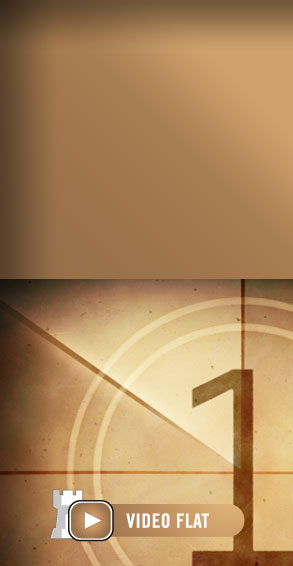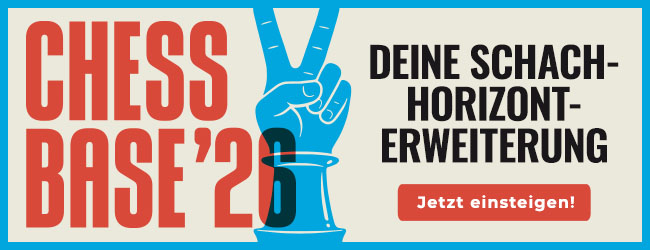In this Video-Course we deal with different dynamic decisions involving pawns. The aim of this course is to arm club/tournament players with fresh ideas which they can use in their own practice.
„Videokurse sind in den letzten Jahren zu einem wichtigen Trainingsbestandteil geworden“, sagt die ehemalige Nummer 12 der Weltrangliste, Ivan Sokolov. Der 56-Jährige, der noch in analogen Zeiten zum Weltklassespieler reifte, ist inzwischen Dauergast im ChessBase-Aufnahmestudio. Denn als Trainer erarbeitete er sich inzwischen einen herausragenden Ruf. Aktuell ist er Trainer der rumänischen Nationalmannschaft. 2022 führte er sogar überraschend das usbekische Team um das Ausnahmetalent Nodirbek Abdusattorov zum Olympiasieg.

Mit seiner Mittelspielreihe hat der im jugoslawischen Jajce geborene und infolge des Krieges in die Niederlande ausgewanderte Aljechin- und Spassky-Fan ein klares Ziel: „Ich will helfen beim Vorteile verwerten.“ Das tut er auf durchaus unkonventionelle Art und Weise, denn er geht im ersten, zweiten und vierten Teil der Videoserie ausführlich auf Bauernstrukturen ein und alle anderen Teile tragen Titel von Eröffnungen (Igel, Sizilianisch, Spanisch, Katalanisch und zweimal Französisch). Doch seine Erklärung überzeugt: Denn er möchte Strukturen erklären, die in den von ihm selbst häufig gegen Weltklassegegner erprobt wurden. Sokolov weiß, wie wichtig es ist, Eröffnungen in Verbindung mit den daraus resultierenden Mittel- und Endspielen zu betrachten. Eine Philosophie, die auch der ehemalige Bundestrainer Dorian Rogozenco und der slowakische Trainer Jan Markos im Interview vertreten und in ihren
 ChessBase-Kursen umsetzen.
ChessBase-Kursen umsetzen.
Wandel der Zeit
Sokolov erinnert sich mit einem Schmunzeln daran, wie er früher Schachpartien aus Tageszeitungen ausschnitt und sich über von Freunden mitgebrachte Turnierbulletins freute. Daraus baute er sich seine eigene Schachbibliothek auf. „Ich habe von den Klassikern gelernt und das Zusammenspiel aus Taktik und Strategie bewundert. Aljechin und Spassky waren darin meine großen Vorbilder“, so der Vater zweier erwachsener Kinder. Natürlich verfolgte er – wie alle anderen Schachbegeisterten – in den frühen 1980er-Jahren auch die WM-Kämpfe zwischen Karpow und Kasparov. Wie die meisten, war er auch begeistert von Kasparovs aktivem Spiel und seinen Turniersiegen bei den jugoslawischen Turnieren in Banja Luka, Bugojno und Niksic. Von seinen Sieg gegen Kasparov viele Jahre später konnte Sokolov damals nur träumen …
Für die heutigen Spieler kaum vorstellbar, dass man damals gutes Schachmaterial noch suchen musste und gute Beziehungen dafür brauchte. „Heute ist das Problem, aus der Flut von Material das richtige auszusuchen“, kennt der Weltklassetrainer die Herausforderung, vor der Amateure immer wieder stehen aus seiner täglichen Praxis. Er rät zu einem abwechslungsreichen Training mit Klassikern in Buchform, aber auch zu Videokursen: „Beides hat seine Vor- und Nachteile. In einem Videokurs kann man vor allem in kurzer Zeit viele Pläne kennen- und verstehen lernen. Das ist ein großer Vorteil gegenüber einem Buch.“
Im Vergleich zum reinen Analysieren mit Engineunterstützung setzt er auf jeden Fall auf die menschliche Komponente. Denn was man mit Sprache erläutern und vermitteln kann, das können einem lange Analysevarianten eben nicht beibringen – vielmehr verwirren sie häufig. Aus seiner langen Erfahrung als Trainer weiß Sokolov aber auch: „Die Menschen lernen unterschiedlich.“ Weshalb letztlich jeder seinen eigenen Weg finden sollte.
Dran bleiben
Wichtig ist es, dran zu bleiben. Taktiktraining sollte einen wichtigeren Stellenwert als reines Eröffnungslernen einnehmen. Komplette Partien – ruhig auch zu den eigenen Eröffnungen passend – sollten ebenfalls analysiert werden. Wichtig sei es hierbei, gut kommentierte Partien anzuschauen. Sokolov ist fasziniert von Chess960 und dem Topturnier, das im Februar in Weissenhaus stattfand. „Es war spannend zu sehen, wie selbst die Topspieler – ohne den Schutzschild ihrer Theoriekenntnisse – von Anfang an auf sich selbst gestellt waren und sogar nach zehn Zügen schon auf Verlust stehen konnten. Das sollte uns noch mehr Respekt vor den ´Alten Meistern´ machen“, freut er sich auf weitere Events dieser Art. Doch das klassische Schach und seine theoretischen Errungenschaften sieht er nicht in Gefahr. Selbst wenn es immer mehr Chess960-Turniere geben sollte, betont er die Wichtigkeit von Mustererkennung und die dafür nutzbaren Datenbanken, Videokurse und Bücher.
Denn dies bildet für ihn den Kern der Spielstärkesteigerung: Magnus Carlsen ist auch deshalb so gut, weil er ein Meister der Mustererkennung ist. Vielleicht auch deshalb gehört sein Sieg gegen den noch jungen Carlsen zu seinen Lieblingspartien:

Sokolov-Carlsen, Hoogoven 2004
Aber auch sein Sieg gegen den ebenfalls späteren Weltmeister Viswanathan Anand ist ein wahres Meisterwerk:
Anand-Hoogovens Wijk aan Zee, 1996
Weitere Siege, die zu seinen eigenen Highlights gehören:
Sokolov-Caruana, European Individual 2010
Sokolov-Topalov, Wijk aan Zee 1996
Sokolov-Kramnik, Wijk aan Zee 2004
Diese eindrucksvollen und lehrreichen Sokolov-Partien und vor allem auch die ChessBase-Videoserie „Understanding Middlegame Strategies“ helfen, mit ziemlicher Sicherheit, künftig seltener fehlzugreifen und seine guten Stellungen in Punkte verwandeln. Und alle, die darüber hinaus noch mehr lernen möchten, können sich schon auf die Fortsetzung der Videoserie und viele weitere Tipps von einem der besten Trainer der Welt freuen …
Interview mit Ivan Sokolov
Wer mehr über Ivan Sokolov wissen möchte, sollte unbedingt die beiden Interviewfolgen mit Sagar Shah lesen – dort sind auch seine eindrucksvollen Siege gegen Garry Kasparow und Judit Polgar zu sehen:
https://en.chessbase.com/post/interview-with-ivan-sokolov-1-2
https://en.chessbase.com/post/interview-with-ivan-sokolov-2-2
Und hier noch ein paar Daten aus der Vita Sokolovs:
Ivan Sokolov wurde am 13. Juni 1968 im bosnischen Jajce (damals noch zu Jugoslawien gehörend) geboren. Er erlernte das Spiel von seinem spielstarken Vater im Alter von sechs Jahren und hatte dadurch auch bereits Zugriff auf Schachliteratur. 1985 wurde er FIDE-, 1986 Internationaler Meister, 1987 als damals fünftjüngster Spieler aller Zeiten Großmeister – nach Tal, Fischer, Spassky und Kasparov.
Sokolov ging während des Bürgerkrieges in Jugoslawien gemeinsam mit Predrag Nikolić 1993 ins Exil in die Niederlande, wo er 1995 und 1998 Landesmeister wurde. Er ist mit einer Niederländerin verheiratet. 2003 wurde er Spieler des Jahres in den Niederlanden. Ab April 2009 war er erneut für den bosnischen Schachverband gemeldet. 2010 organisierte er das Bosna Open in Sarajevo. Im Dezember 2010 wechselte er wieder zurück zum niederländischen Schachverband.

Beim Simultan
Von 2018 bis 2022 war Sokolov Vizepräsident der Europäischen Schachunion. Derzeit ist Sokolov Vorsitzender der Trainerkommission der Europäischen Schachunion. Im Jahr 2022 trainierte Ivan Sokolov das Team von Usbekistan, das die Olympiade in Chennai gewann. Seit Januar 2023 ist Ivan Sokolov Nationaltrainer des Rumänischen Schachverbandes.
Sokolov nahm an zwölf Schacholympiaden teil, spielte in mehreren nationalen Topliegen und feierte viele Einzelerfolge, wie z.B. Biel 1988, Portorož 1993, Dresden (Zonenturnier) 1998, Hastings 1998/99, Sarajevo 2003 und 2005.
Außerdem ist Sokolov Autor von mehreren Schachbüchern.

In this Video-Course we deal with different dynamic decisions involving pawns. The aim of this course is to arm club/tournament players with fresh ideas which they can use in their own practice.



















 ChessBase-Kursen umsetzen.
ChessBase-Kursen umsetzen.






